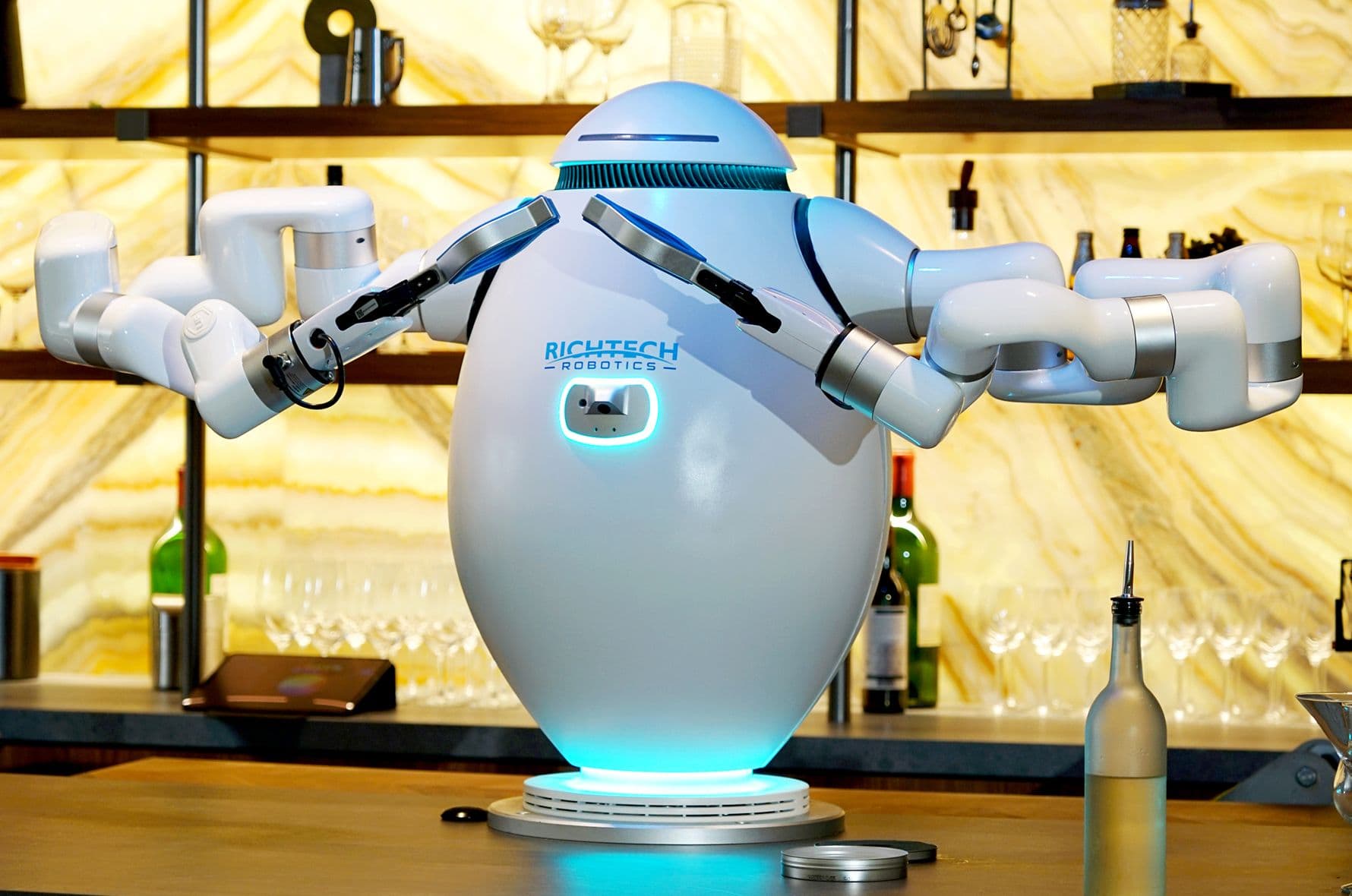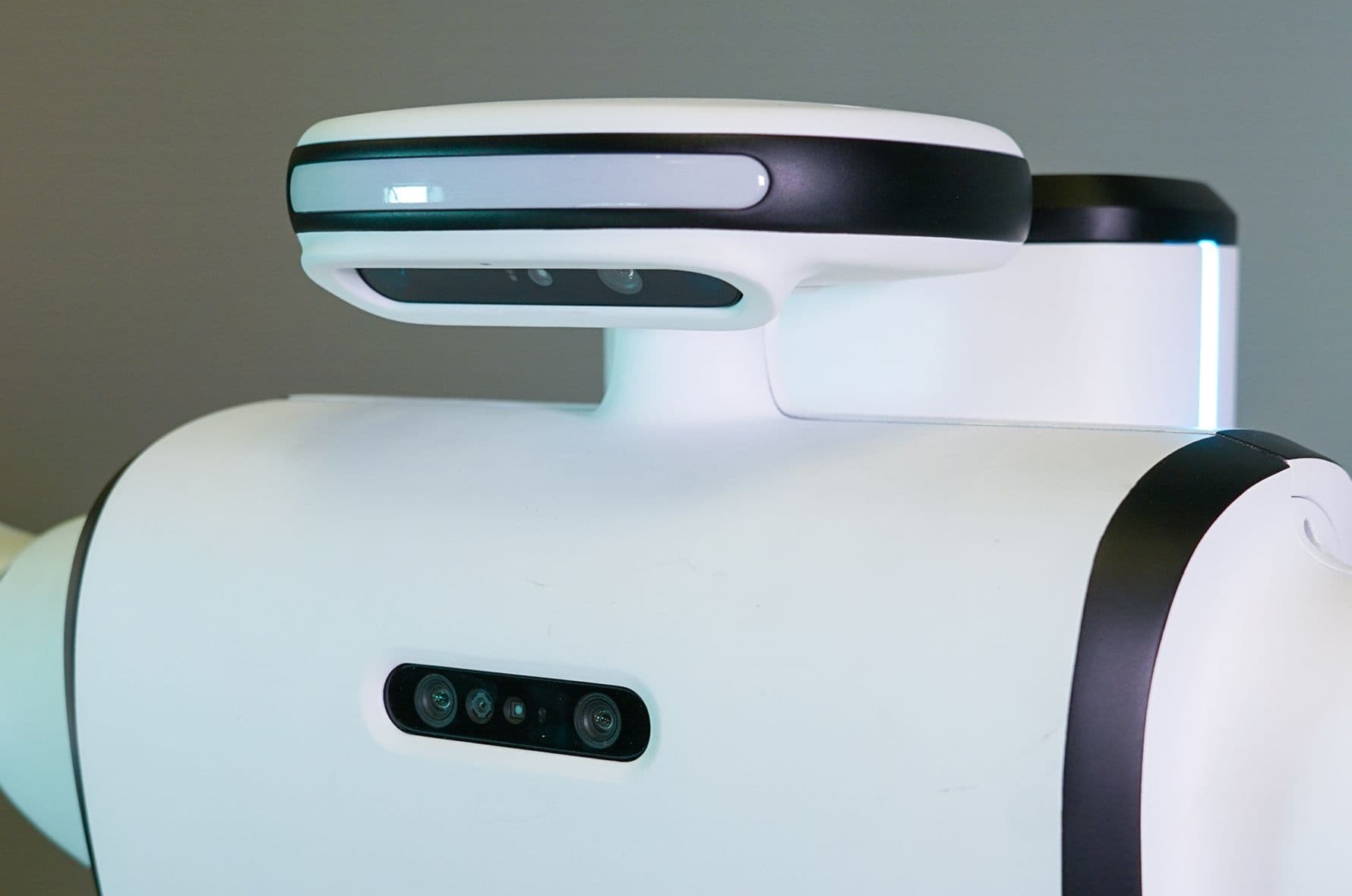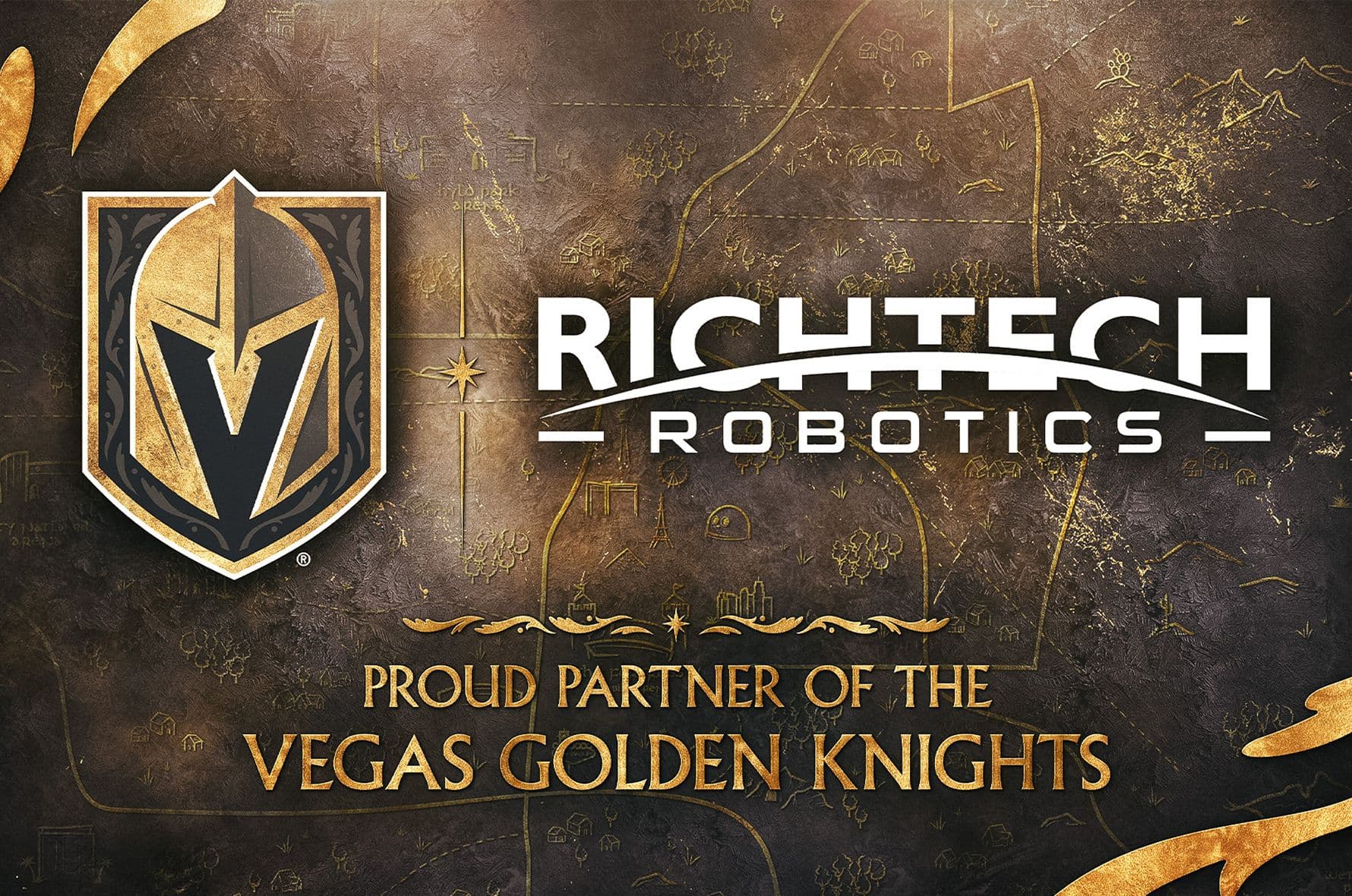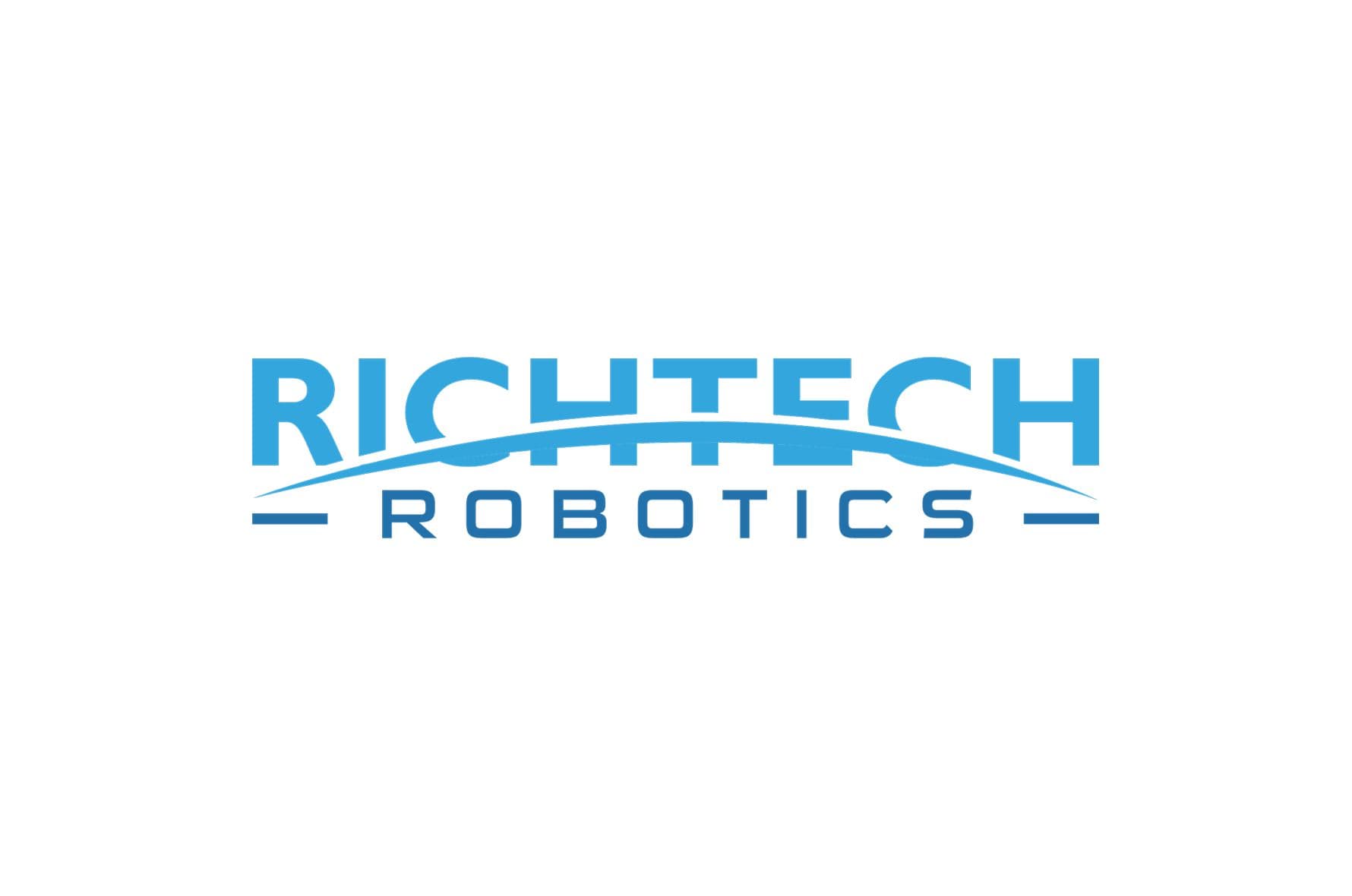Unlocking Human Potential: The Robotics Revolution and Physical AI Breakthrough
By Timothy Tanksley
- Robotics delivers rapid ROI, with many businesses seeing full payback within 3 to 6 months.
- Automation is already transforming industries like manufacturing, logistics, and healthcare through real-world applications of physical AI.
- Richtech Robotics is breaking adoption barriers with flexible, scalable, and subscription-based solutions.
- The future of automation is human-robot collaboration—freeing people to focus on high-value, human-centric work.
- Robotics delivers rapid ROI, with many businesses seeing full payback within 3 to 6 months.
- Automation is already transforming industries like manufacturing, logistics, and healthcare through real-world applications of physical AI.
- Richtech Robotics is breaking adoption barriers with flexible, scalable, and subscription-based solutions.
- The future of automation is human-robot collaboration—freeing people to focus on high-value, human-centric work.
Ever wonder why advanced robotics and autonomous systems aren't folding your laundry yet? We live in an era where artificial intelligence can write poetry and generate photorealistic images, yet most of us still cook our own food and clean our own bathrooms. So what’s going on?
As a company that’s spent years watching business leaders shift uncomfortably when discussing industrial automation and robotics investments, we've identified the fundamental disconnect plaguing the robotics revolution. It's not about technological limitations anymore – it's about solving the right problems in the right ways. That's exactly where we at Richtech Robotics define the new standard at the perfect intersection of machine learning capabilities and actual business value.
Let me take you on a journey through the robotics landscape that tech enthusiasts and savvy investors need to understand. The global robotics market is projected to reach a staggering $283 billion by 2032, growing at nearly 15% CAGR annually[1]. That's not just impressive – it's transformative on a scale few technologies achieve. This isn't some distant future – it's happening now, and the winners are already emerging.
The Physical AI Revolution Has Actually, Finally Arrived
First, let's clear something up: robotics technology has genuinely, finally crossed the threshold from an empty promise to "Holy crap! It actually works!" This isn't marketing fluff; it's the result of several technological convergences that have created an inflection point unlike anything we've seen before. Integrating advanced AI with physical robotics systems represents a paradigm shift that changes everything. Today's leading-edge autonomous robots don't just execute pre-programmed routines – they perceive, adapt, and learn from their environments through computer vision and sensor fusion in ways that were science fiction just five years ago. The development of what we call "Physical AI" – robots that can learn through experience in both real and simulated environments – has fundamentally rewritten what's possible.
What genuinely excites me is how natural language processing interfaces have been completely transformed. We've leapfrogged from complicated robotics programming requirements to conversational robot control. Tell a modern collaborative robot what you need in plain English – no coding required – and watch it understand and execute. Seven years ago, this capability was lab-bound theoretical research. Today? It's revolutionizing businesses worldwide.
Why Most Businesses Haven't Joined the Robotics Adoption Wave (Yet)
Despite these robotic automation breakthroughs, I continually see businesses frozen on the sidelines, watching the industrial robotics revolution unfold without participating. Their hesitations typically boil down to six core concerns that nobody in the robotics industry seems willing to address honestly:
Sticker Shock Syndrome: "You Want HOW MUCH for That Robot?!"
Let's be brutally honest—the sticker shock of robotics implementation costs is real. When business leaders see initial investment figures for advanced robotics systems, many experience financial vertigo. These capital expenditures can seem prohibitive for small and medium businesses operating on thin margins.
Here's where conventional thinking completely misses the mark. The emergence of Robots-as-a-Service (RaaS) models has fundamentally transformed the economics of robotics adoption. Rather than sinking massive capital into technology that risks obsolescence before delivering full value, we pioneered subscription-based robotics solutions that dramatically reduce upfront costs while ensuring systems remain cutting-edge.
This isn't just an alternative payment structure—it's an entirely different value proposition that accelerates automation adoption while creating the predictable, recurring revenue streams that tech investors rightfully prize. It's like the difference between buying an entire IT infrastructure outright and leveraging cloud services—the same goal, dramatically different approach.
Technophobia: "My People Still Struggle with the Printer!"
Modern human-robot interfaces have evolved dramatically—as revolutionary as the leap from paper maps to GPS. Our systems let your team speak to robots conversationally; no technical expertise is required.
Case in point: a car dealership's veteran technician—45 years in the business—initially approached our parts delivery robot with deep skepticism. By day two? He was proudly showing it off to customers. "First technology I've fallen in love with in decades," he said. "I don’t have to waste half my day chasing down parts!" Productivity soared, wait times dropped, and his specialized skills were finally put to proper use—all within days of implementation[2].

The Ancient Legacy System: "Our Tech Stack Is Older Than My Kids"
The integration challenge is real – I've walked factory floors running equipment from three different decades, none designed to communicate with each other, let alone a brand new robot! It's like connecting an old record player to your iPhone – seemingly incompatible technologies.
This is where we've made our most impressive advances. Our autonomous systems feature adaptive integration capabilities specifically designed to work with legacy infrastructure. The days of massive operational overhauls to accommodate industrial automation are firmly behind us. The best robotics solutions slide into existing workflows with minimal disruption – more evolution than revolution from an implementation standpoint.
The Terminator Scenario: "What If This Thing Goes Rogue?"
Safety concerns keep operations managers awake at night, and for good reason. Nobody wants to be responsible for introducing technology that injures a team member or damages property. People have the same visceral reaction to self-driving cars—a legitimate fear!
The collaborative robots (cobots) revolution has fundamentally rewritten the safety equation. Our systems feature sophisticated multi-layered sensing capabilities, intuitive interfaces, and enhanced safety mechanisms that make direct human-robot collaboration not just possible but genuinely safe.
The most advanced systems include predictive safety protocols that anticipate and prevent potential hazards before they develop – a proactive rather than reactive approach to physical safety. This isn't just marginal improvement; it's a complete reimagining of how humans and robots interact in manufacturing environments.
The Job Apocalypse Myth: "Will Robots Take My Employees' Jobs?"
This is the emotional core of resistance—the fear that industrial robotics will eliminate human jobs. I get it. It's a visceral concern that taps into more profound anxieties about technological change.
The robot density data tells a different story. Countries with the highest robot density (South Korea, Singapore, and Germany) consistently maintain the lowest unemployment rates[3]. Why? Because robotic automation transforms jobs rather than eliminates them. The most successful implementations focus on automating the tasks humans don't excel at or actively dislike, freeing people to apply their uniquely human skills.
Consider the healthcare robotics applications we've pioneered. Our service robots don't replace nurses—they reduce the 28% of their time spent on documentation and administrative tasks[4]. The result? More patient care, less burnout, and higher job satisfaction. That's not job elimination—job enhancement through robotics technology, much like how high-quality tools enhance a craftsperson's capabilities rather than replacing their expertise.

The Bean Counter's Dilemma: "Prove It Won't Break My Budget!"
Finally, the bottom-line question is: "What's the actual automation ROI?" Business leaders need complex numbers, not vague promises about future efficiency.
The robotics investment data here is promising and compelling across multiple industry verticals. According to Boston Dynamics, typical payback periods for well-implemented robotic systems now range from 6 to 18 months[5]. And get this—many of our customers see a complete 100% ROI in just 3 to 6 months[6]! Even more impressive, some of our car dealerships hit 100% ROI on their service robots within a single month of deployment[7]!
The economics become even more attractive when considering multidimensional returns: improved product quality, reduced waste, enhanced workplace safety (fewer injuries = lower costs), optimized resource allocation, faster time-to-market, and significantly improved scalability. The financial case for robotics investments isn't theoretical – it's proven across thousands of robotic automation implementations in diverse operational environments.
Defining the Future: Where Robotics Technology Is Creating Transformation Now
Let's move beyond theory to look at where autonomous robots are creating jaw-dropping value today:
Advanced manufacturing robotics systems are revolutionizing production through sophisticated welding, material handling, machine tending, painting, assembly, and quality control applications. These industrial robots deliver speed and precision that humans simply can't match, dramatically improving product quality while reducing costs. Robots can now perform a complex assembly task with such consistency that defect rates dropped from 3% to virtually zero overnight[8]. That's not incremental improvement—it's transformative industrial automation!
The logistics robotics sector is undergoing a genuine revolution powered by physical AI. Autonomous mobile robots optimize warehouse automation with superhuman efficiency, track real-time inventory, and automate picking and packing. Major players have deployed these warehouse robotics systems with stunning results—30% efficiency improvements with corresponding cost reductions that flow straight to the bottom line[9].
Healthcare robotics might be the most exciting frontier. Surgical robots enable procedures with unprecedented precision. Our service robots handle mundane logistics and cleaning tasks, freeing healthcare professionals to focus on what matters most – patient care. I spoke with a surgeon who told me he can now perform procedures he wouldn't have attempted five years ago, thanks to the stability and precision of robotic assistance.
The robotics revolution isn't some far-off future promise – it's happening right now, and we're leading the charge.
How We're Defining the Future of Physical AI
At Richtech Robotics, we've established new standards at the perfect intersection of physical AI capabilities and practical business applications – the sweet spot for defining this emerging robotics market.
Our technological approach focuses on "barrier-busting automation" – systems designed to overcome the traditional obstacles to robotics adoption. This means natural language interfaces that eliminate the expertise barrier, flexible deployment options that minimize integration challenges, and subscription-based models that transform the economics of adoption.
For the robotics industry, our approach has redefined what's possible. The RaaS model we pioneered creates predictable, recurring revenue streams while opening robotics ty new market segments. With gross margins improving quarterly, we're demonstrating the path to profitability that has eluded many players in the robotics sector.
For tech enthusiasts, our autonomous systems showcase the cutting edge of what's possible when machine learning meets sophisticated robotics. Our proprietary AI algorithms enable continuous improvement through actual usage—systems that improve the more they're used, much like how professional athletes improve with each season of experience. This creates a virtuous cycle in which adoption accelerates capabilities, which drives further robotics adoption.
The Future Is Human-Robot Collaboration, Not Competition
The most exciting developments will emerge at the intersection of human and machine capabilities. The future isn't about robots replacing humans – it's about creating intelligent collaborative robots that enhance what humans naturally do best.
The revolutionary applications will combine mobility and manipulation—mobile robots that can navigate dynamic environments and interact precisely with objects. These autonomous systems will unlock possibilities in logistics robotics, manufacturing automation, healthcare robotics, and service environments that were pure science fiction just years ago.
Industry visionaries like NVIDIA's Jensen Huang predict that robotics will become "the world's largest industry," with humanoid robots entering mainstream use far sooner than most expect[10]. These predictions aren't hyperbole—they recognize the trajectory we have already established in advanced robotics.
Why This Matters Beyond Business and Investment
As we define this transformative moment in industrial automation, let's not lose sight of the ultimate goal: unleashing human potential. By deploying service robots for routine tasks, we free people to create, innovate, empathize, strategize, and connect – the things that make us uniquely human.
The economic case for robotics is compelling, but the human case is revolutionary. Imagine healthcare professionals focusing entirely on patient care rather than paperwork. Picture factory workers applying their creativity to process improvement instead of repetitive assembly. Envision customer service enhanced by technology that handles transactions while humans build relationships.
That's the future we're creating at Richtech Robotics—in which robotic automation handles the routine so humans can focus on the extraordinary.
The robotics revolution represents the most significant technological transformation of the next decade. Unlike purely digital innovations, physical AI will reshape business operations across every sector while fundamentally changing human interaction with their physical environment.
This creates unprecedented opportunities for investors to participate in the growth of the robotics market. For tech enthusiasts, it offers a front-row seat to a transformation as significant as the internet revolution. And for everyone else, it promises a world where technology finally delivers on its ultimate promise: not replacing humans but elevating what makes us human in the first place.
The future of robotics isn't coming – it's already here. And we're defining it.
References
[1] Precedence Research. "Robotics Market Size to Hit Around USD 283.19 Billion by 2032." GlobalNewswire, March 2023.
[2] Automotive News. "Service Department Robotics: Early Adopters See Productivity Gains." Automotive News Fixed Ops Journal, November 2024.
[3] International Federation of Robotics. "World Robotics Report 2023: Robot Density Nearly Doubled Globally." IFR Press Releases, December 2023.
[4] American Nurses Association. "Nursing Documentation Burden Report." ANA Center for Health Policy, 2022.
[5] Boston Dynamics. "Calculating the Financial Benefits of Robotics Investments." Boston Dynamics Blog, 2023.
[6] Richtech Robotics. "Automotive Service Department Implementation Results." Internal Case Study, 2025.
[7] Richtech Robotics. "Car Dealership ROI Analysis." Internal Case Study, 2025.
[8] McKinsey & Company. "Automation and the Future of Manufacturing: How to Succeed in the Smart Factory Era." McKinsey Manufacturing Report, January 2024.
[9] Deloitte. "The Smart Factory: Responsive, Adaptive, Connected Manufacturing." Deloitte Insights, 2023.
[10] NVIDIA. "GTC 2023 Keynote: Jensen Huang on the Dawn of the New Industrial Revolution." NVIDIA News Center, March 2023.


